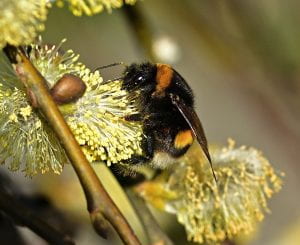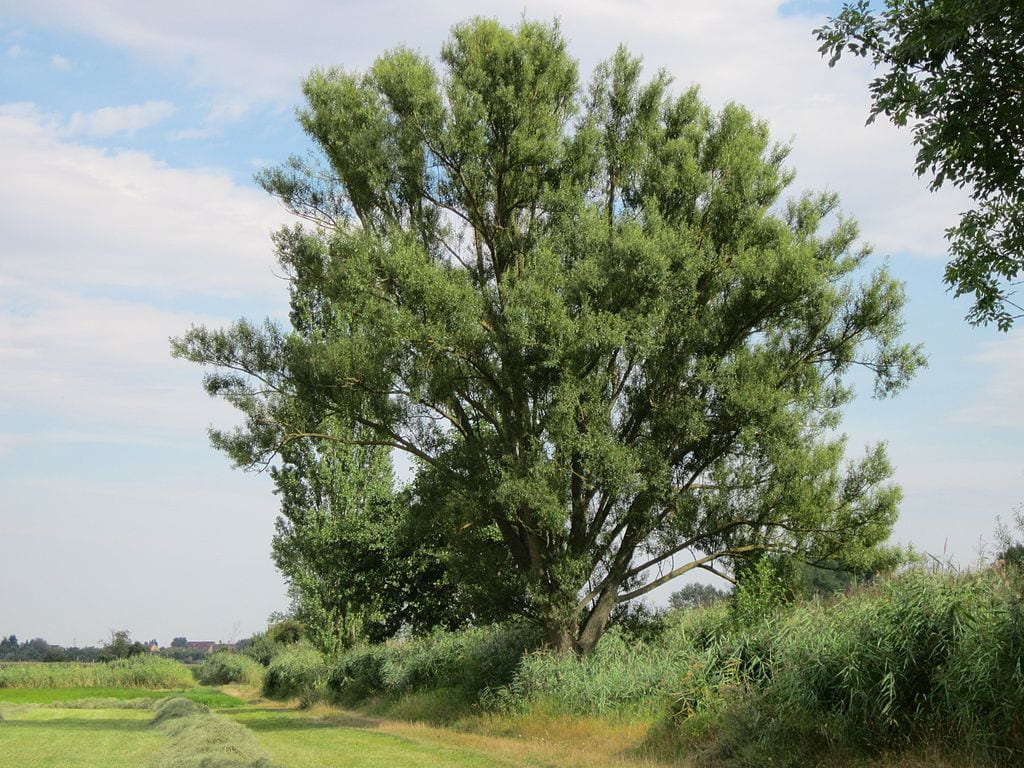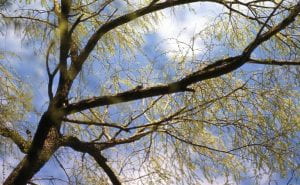By Cecille Jones, Monroe Master Gardener Volunteer
This article appeared in the July 2021 Issue of Gardening in Orange County.
Willows include more than 400 trees and shrubs from the Salix genus. New York boasts more than 15 native willow species. Whether it’s a balsam willow, bearberry willow, heart-shaped willow, pussy willow, peach-leaf willow, or sageleaf willow, they all have similar characteristics. All are moisture-loving plants native to temperate and cold regions in the Northern Hemisphere. They range in size from low ground-hugging shrubs to giant trees towering up to 90 feet.

Regardless of stature, willows play an important role in maintaining the health and vigor of many wetland environments. First and foremost, willows reduce erosion. They have large and expansive root systems that grip sediment and keep shorelines in place. As a result, they are used in many habitat-restoration projects.
A secondary benefit, willows grow fast and propagate easily. Moreover, they are known to cleanse the environment of toxins by sequestering high levels of heavy metals such as cadmium.
With their densely branched and foliated leaves, willows help to reduce the water temperature in wetlands adjacent to rivers and streams, helping protect cold water fish such as trout and perch.

Finally, willows produce beautiful catkins in the spring, providing a food source for pollinating insects. Caterpillars feast on their leaves, and birds use their tightly clustered branches to nest and hide from predators.
In landscaping, willows can be used to create living fences, or even sculptures. However, be cautious about planting willows near sewer lines or water pipes. Because willows seek out underground water, their roots will penetrate a water main or sewer line, resulting in thousands of dollars in repairs.
For people looking to help restore wetland habitat to its former glory, willows make the perfect choice. A good example of one such willow is the black willow (Salix nigra). This tree is the largest and most important among the willows. They prefer cool climates and thrive in plant hardiness zones 2 through 8. They hold the distinction of having one of the most extensive ranges across the United States.

The black willow is considered a small to medium-sized tree, growing between 10–60 feet. Leaf blades are up to 5 inches long, narrow and tapering to an elongated tip, with margins finely serrated. They bloom from April to May and have bright yellow-green twigs that bear yellow-green catkins. They bear inconspicuous clusters, with male and female flowers on separate trees.

Black willows often have several trunks up to 14 inches in diameter growing out of one root. These trees are topped by a broad, irregular crown that provides ample shade in summer. Usually found along stream banks, swamps, farm ponds and pasture sloughs, black willows love moisture but will also tolerate drier soil, although that reduces vigor.
One of the lightest of eastern hardwoods, the black willow is paradoxical. It is structurally weak, but when nails are driven into it, black willow wood does not split. Being light and flexible, black willow wood was once used to make artificial limbs. Today, it is often used to make shipping boxes and toys.
